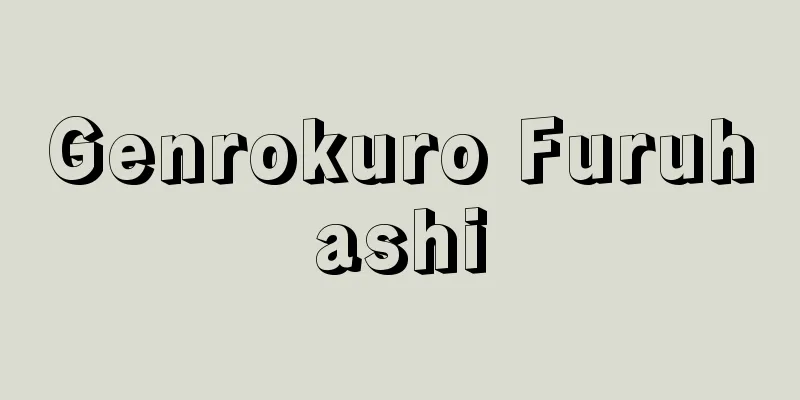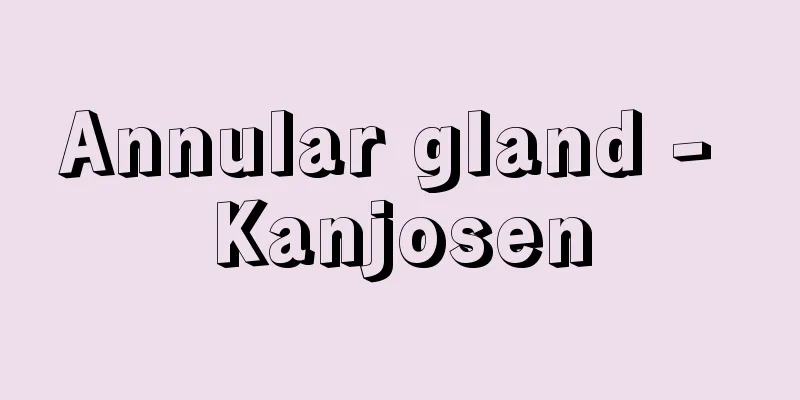Council for Educational Renewal - Council for Educational Renewal

|
...While the Taisho-era New Education Movement was progressing, preparations were also underway to strengthen state control over schools, from elementary and middle schools to universities. In the 1930s, the private education movement, which aimed for independent reform of school education, was suppressed, and in 1936, the Council for Educational Reform reported a policy to make schools "institutions for training based on the national polity," based on the idea that since ancient times in Japan, rituals, politics, and education have fundamentally been inseparable, and it was decided to establish facilities (such as shrines) to promote the beautiful custom of reverence for the gods and ancestors. Then, in 1941, the name of elementary schools was changed to national schools, and education there was to be unified in general with the way of the Imperial Nation. ... From [Educational Reform]...It began with the issue of the Emperor Organ Theory by Minobe Tatsukichi in the Imperial Diet in February 1935 (Showa 10), and was developed based on the report of the Educational Reform Council (an advisory body to the Minister of Education) in October of the following year. It was a policy and movement by the government, military, and right-wing civilians to control education, scholarship, and thought based on the Japanese spirit and the theory of the national polity, and continued until Japan's defeat in World War II. For the government and military, who sought to expand the market of growing Japanese capitalism through military infiltration, the rise of socialist and liberal ideas under Taisho democracy and their penetration into students, intellectuals, and workers was seen as an unacceptable domestic cause of anxiety. ... From the issue of clarifying the national polity…The Okada Keisuke Cabinet also succumbed to this and banned the sale of three of Minobe's books, including "Constitution Summary," on April 9. They then issued the first and second statements on the clarification of the national polity on August 3 and October 15, respectively, declaring the Emperor Organ Theory to be antithetical to the national polity and deciding to eliminate the theory. This put an end to the movement to clarify the national polity, but the government further established the Council for Reform of Education, chaired by the Minister of Education, in November, and based on its report, the Ministry of Education published "The True Meaning of the National Polity" in May 1937. This book rejected individualism as the basis of liberalism and democracy, and said that Japan was a "big family nation" with the Imperial Family as its head family, and that the Japanese people should "absolutely obey" and "revert to oneness with the Emperor," and that they should realize harmony while respecting their own roles. However, the "clarification of the national polity" was ultimately nothing more than forcing this ideology on the people. … From [Thought Guidance]...The policy of ideological guidance was given even more importance after the March 15 Incident in 1928, and each school was assigned a student affairs officer and an ideological guidance allowance was allocated. In the 1930s, the Student Ideological Problem Investigation Committee was established in the Ministry of Education in 1931, the National Spiritual Culture Research Institute was established in August 1932 (National Spiritual Training Centers were established in each prefecture, and they worked to ideologically guide especially those who had converted), and the Educational Reform Council was established in November 1935. This strengthened the policy to aim for uniform control of all academics and education based on the idea of the national polity and the Japanese spirit, and developed into the militaristic education and fascist ideological control policies of the wartime period. [Kuno Toshihiro]... *Some of the terminology used in reference to the Council for Academic Renewal is listed below. Source | Heibonsha World Encyclopedia 2nd Edition | Information |
|
…大正期新教育運動がすすむ一方,同じ時期に小・中学校から大学まで,学校に対する国家統制強化の準備がすすめられていたのである。30年代に入ると,学校教育の自主的改革を志向する民間教育運動は抑えられ,36年の教学刷新評議会答申で,日本では古来,祭祀と政治と教学とは根本において不可分であるとの考えにもとづき,学校を〈国体ニ基ク修練ノ施設〉とする方針がたてられ,敬神崇祖の美風を盛んにするための施設(奉安殿など)の設置が定められた。そして41年小学校は名称も国民学校に改められ,そこでの教育を全般にわたって皇国の道に帰一せしめることとされた。… 【教学刷新】より…1935年(昭和10)2月の帝国議会における美濃部達吉の天皇機関説問題に発端し,翌年10月の教学刷新評議会(文部大臣の諮問機関)の答申に基づいて展開されはじめ,第2次大戦敗戦時まで継続された,政府・軍部・民間右翼による,日本精神と国体論とに立脚した教育・学問・思想の統制の政策および運動。 成長する日本資本主義の市場拡大を軍事侵出によって果たそうとする政府・軍部などにとって,大正デモクラシー下での社会主義・自由主義思想の台頭とその学生・知識人・労働者層への浸透は,許しがたい国内的不安要因とされた。… 【国体明徴問題】より…岡田啓介内閣もこれに屈して,4月9日には《憲法撮要》など美濃部の3著書を発売禁止処分とし,さらに8月3日には第1次,10月15日には第2次の国体明徴声明を発して,天皇機関説を国体に反するものと断定,この学説の排除を決定した。国体明徴運動はこれによって終息したが,政府はさらに11月,文相を会長とする教学刷新評議会を設置,その答申に基づいて,37年5月,文部省は《国体の本義》を刊行した。同書は自由主義,民主主義の基礎としての個人主義を排撃し,日本は皇室を宗家とする〈一大家族国家〉であるとして,天皇に〈絶対随順〉〈没我帰一〉すること,おのおのの分を守りながら和を実現していくことが,日本国民のあるべき姿だと説いているが,〈国体明徴〉とは結局,このようなイデオロギーを国民に強制していくことにほかならなかった。… 【思想善導】より…そして思想善導政策は28年の三・一五事件を契機にいっそう重視され,各学校に学生主事,生徒主事がおかれ,思想善導費が配分された。さらに30年代にはいると,31年に学生思想問題調査委員会が文部省にでき,32年8月の国民精神文化研究所の設立(各府県に国民精神講習所が設置され,とくに転向者の思想善導に努めた)と35年11月の教学刷新評議会の設置とによって,国体観念と日本精神による学問と教育全体の画一的統制を目ざすものへと強化され,戦時中の軍国主義教育やファッショ的な思想統制政策へと発展していった。【功刀 俊洋】。… ※「教学刷新評議会」について言及している用語解説の一部を掲載しています。 出典|株式会社平凡社世界大百科事典 第2版について | 情報 |
>>: Educational Affairs Bureau
Recommend
Kuze-so
A manor located in Otokuni County, Yamashiro Prov...
Sisebut
...This made it possible to form a political syst...
Nitrosation - Nitroso (English spelling) nitrosation
A reaction to introduce the nitroso group -NO into...
Suzhou River
Another name for the Wusong River, which flows fr...
Yekuno Amurak - Yekuno Amurak
...In the 7th century, when the Arabian Peninsula...
Pension insurance - nenkinhoken (English) annuity insurance
A type of life insurance. It is classified based o...
Sint-Martens-Latem (English spelling)
…Fauvism was represented by the sculptor Wouters,...
Clarín (English spelling)
…He wrote 46 volumes of novels based on the histo...
Cerura tattakana (English spelling)
…[Shigeo Sugi]. … *Some of the terminology that m...
Yin-wen tao (English spelling)
In a broad sense, it refers to pottery that still ...
MacAdell, J.
...The German Ludwig von Siegen (c. 1609-80) disc...
The Essence of Medical Sciences - Seisetsuigensouyo
Japan's first Western physiology book. Physiol...
Macedonia - Macedonia (English spelling)
The name of the region in the central Balkan Peni...
Kushiro coalfields
The coalfields are located in the eastern part of...
Rad
A unit of absorbed dose. It is expressed in rad (...









